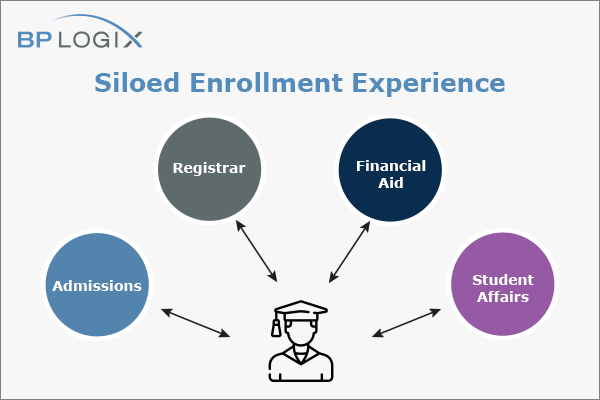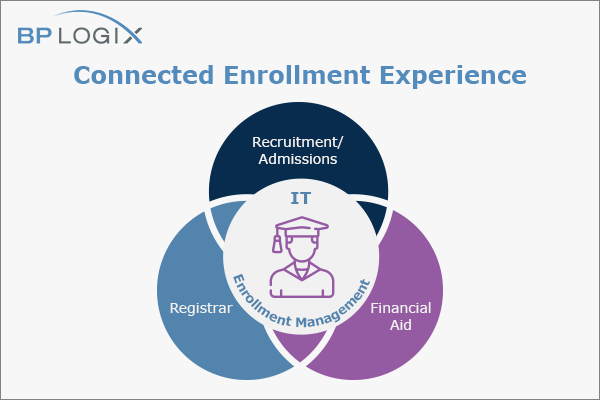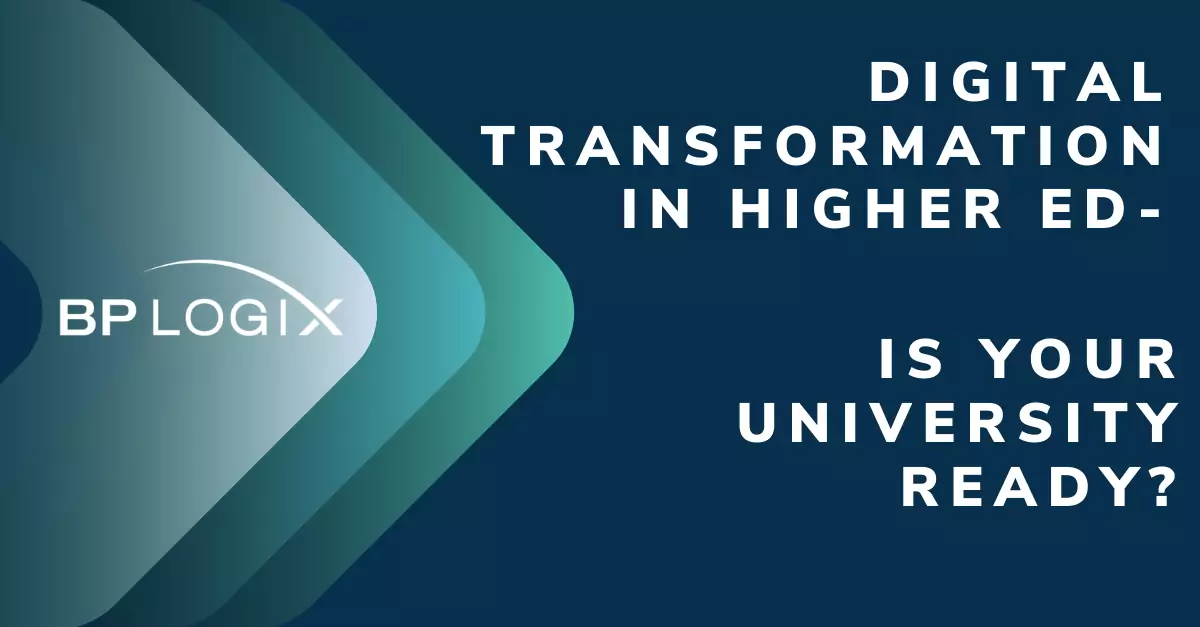Keeping enrollments up is mission critical to institutional leaders in higher ed and increasingly so as balancing budgets have become more difficult amidst funding uncertainty with Covid-19. However, as every VP of Enrollment knows, keeping enrollment levels high isn’t something they can manage without collaboration across departments.
The move to a virtual student model has exacerbated the misalignment of student expectations with institutional processes. Processes and priorities need to be coordinated across new student recruitment, registration, financial aid, student support services, curriculum development, and other academic areas that affect enrollments, student persistence, and student outcomes.
When processes and departments remain siloed, student experience suffers. Asking students to consistently swivel between disconnected systems, scan and email documents, or worse yet, run paper from one department to another for signatures can negatively impact student satisfaction early on.

One of the key hurdles to achieving cross-departmental coordination is that systems and processes are often siloed and disparate. How can enrollment leaders break through these silos with their limited budgets and resources?

Traditional approaches of building cross functional processes rely on a combination of working with large monolithic ERP systems (eg: Ellucian/ Banner, PeopleSoft, etc), point SaaS applications and custom-built applications. The challenge with these approaches is that they fail to adequately address the core problem, which is to allow for seamless processes across organizational silos.
With a low-code platform, higher ed institutions can use a single platform to build out a broad range of connected applications across the enterprise keeping the student at the center. The right low-code platform can connect at the backend of enterprise applications and serve as the technology layer to providing a consistent user experience. This can be done without requiring an army of software developers and the associated high costs and lack of agility.
With BP Logix Higher Ed Edition, leaders in enrollment and student services have the added advantage of a platform that understands the unique needs of higher education (eg: accessibility, FERPA compliance, etc) and comes with built in templates for a broad range of processes across functional areas. Add to that access to a community of higher ed professionals with whom you can collaborate and benchmark processes.
Build best in class processes with minimal support from your IT organization. For example, the University of Central Florida created a student portal in less than 45 days. The portal allowed students to access a broad range of services across multiple departments by conveniently logging in from their computers, kiosks and mobile phones.
“We care about making sure our international students have the best student experience, so we asked ourselves, how do we use technology to make this better? Through forms and workflows, we connect with our students and make sure the data gets into our SIS or continues to our internal processes,” said Paulo Graxton, Associate Director of Operations at UCF. “Working with BP Logix has absolutely improved our student experience.”
A better student experience was one of the key reasons for 15% year over year growth in student population. Learn more about how higher ed leaders like Paulo are using automation to improve the student experience in our upcoming webinar Driving Better Student Engagement through Automation.




